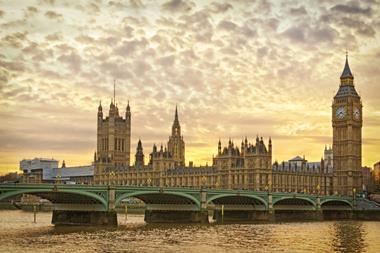The UK’s Environment Agency Pension Fund (EAPF) is looking to increase investment in private debt funds this financial year as it continues to diversify growth assets as part of strategy changes agreed in 2015.
This strategy involves reducing equity risk and creating a “high level” allocation to diversifying growth assets as an alternative to low-returning bonds.
The diversifying-growth allocation consists of a 12% allocation to real assets, 5% to growth fixed income and 5% to private debt/illiquid credit.
As part of the latter, the £2.73bn* (€3.47bn) EAPF worked with other Local Government Pension Schemes (LGPS) and UK pension funds to create a private debt fund, run by BlueBay Asset Management, that is tailored to the particular needs of LGPS.
“We are looking to invest in one or two more funds in this area during 2016-17 on a similar basis,” said the EAPF in its recent annual report.
The EAPF invested £50m in the BlueBay Direct Lending Fund in the 2015-16 financial year, according to its annual report.
Its real assets portfolio stands at £330m, or 12.1% of the fund, as at 31 March, counting investments and undrawn commitments.
“Despite a lot of demand from investors,” the fund said, “we have found some good opportunities, partly through focusing on partnerships and innovative structures.”
It highlighted investments in UK wind – with fund manager Temporis – and UK and European renewable energy – with Copenhagen Infrastructure Partners.
As concerns the fund’s bond allocation, it moved from a passive mandate to a “buy and maintain” basis, which it said provided “a low-cost portfolio with a better balance and more consideration of environmental, social and governance issues than an indexed allocation would achieve”.
Last year also saw the EAPF launch a policy to address the impact of climate change, aimed at ensuring its investments were in line with keeping global warming to below 2°C pre-industrial levels.
Analysis done for the policy influenced the EAPF’s decision to reduce its exposure to UK equities.
The pension fund also reviewed its exposure to “value equities” – value being the factor driving the equity selection.
It decided to keep this exposure but is looking for “options to reform it into an approach that is both ‘low carbon’ and ‘value”.
As a first step in this process, it has switched smart beta indices, moving from a Research Affiliates Fundamental Index (RAFI) tracking 3,000 companies to the RAFI 1000 index, which has lower carbon exposure.
The EAPF had some £100m invested in the value-orientated equity strategy as at 31 March.
The fund is also understood to be continuing to look for private equity funds combining high return and strong sustainability credentials.
These investment plans come as the EAPF and nine other funds work to develop an asset pool to meet government requirements.
The grouping has been named the Brunel Pension Partnership and, like other LGPS pools being developed, submitted a proposal to the government in time for a 15 July deadline.
Risk aversion rewards
The EAPF has a target for 25% of the fund to be invested in the “sustainable and green economy”, and it said it has delivered on this.
As at 31 March, 28% (£769m) of its assets were invested in companies with more than 20% of revenues derived from energy efficiency, alternative energy, water and waste treatment, and public transport, and investing in property and infrastructure funds with low carbon or strong sustainability criteria.
The EAPF posted a return of 2.3% for its active fund in the year to 31 March, with assets growing by £73m to £2.73bn.
The overall return of 2.3% for the last financial year outperformed the fund’s strategic benchmark by 2.6 percentage points (the benchmark posted a loss of 0.3%).
Clive Elphick, chairman of the pensions committee, said: “The outperformance in the year was due to the benefits of the risk-averse stance we have chosen to take to support the fund in more difficult markets.”
The EAPF’s CIO recently told IPE the fund’s investment strategy had sheltered it from the impact of the Brexit vote.
In its 2016 annual report, the pension fund also noted that its investment performance was helped by the fund’s having significantly reduced its exposure to high carbon assets, sheltering it from the fall in the oil price.
*As at 31 March 2016. The fund recently told IPE it had £2.9bn in assets at the end of June 2016.





























No comments yet